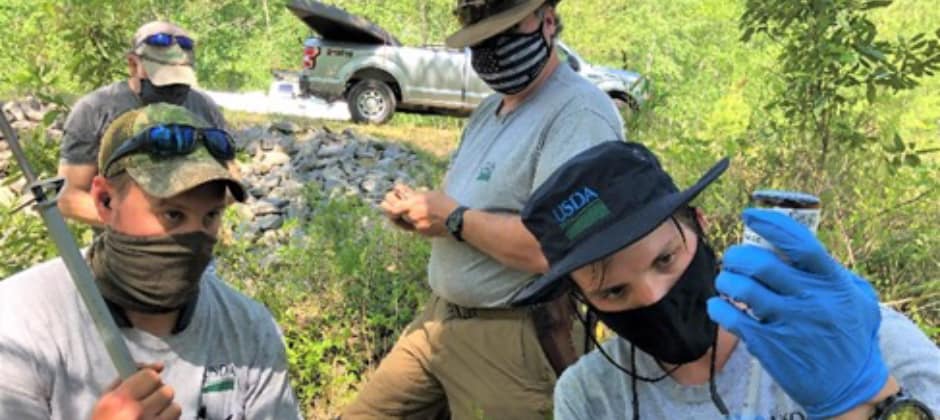Share this article
A base for beaver research
One of the largest military installations in the world, Fort Bragg Army Base covers 251 square miles and is home to 57,000 military personnel. It also hosts a healthy—and increasing—American beaver (Castor canadensis) population.
The base has become the site of an operational and research partnership project to better understand the impacts of beaver behavior and sensitive species, and beaver impacts on military operational readiness.
Located in the Sandhills ecoregion, Fort Bragg is dominated by the longleaf pine (Pinus palustris) ecosystem, considered one of the most biologically diverse landscapes in North America.
Closely correlated with beaver activity are three endangered species. The Saint Francis satyr (Neonympha mitchellii francisci) is an endangered butterfly only found at Fort Bragg. And rough-leaved loosestrife (Lysimachia asperulifolia) and American chaffseed (Schwalbea americana) are both federally endangered plants.
USDA Wildlife Services personnel collaborated with the Fort Bragg Wildlife Branch, North Carolina Wildlife Resources Commission and National Wildlife Research Center to live trap and radio mark 50 beavers in September 2018 to estimate survival, movement and habitat use in the absence of nonlethal practices.
The research continued in April 2021 with 50 more beaver being marked to research potential impacts to beaver behavior in the presence of nonlethal practices. These 50 beaver were captured within four trap nights using cable restraints, given cursory health exams, fitted with VHF transmitters on their tails and released at their capture locations.
During the next 12 months, three wildlife specialists will locate the beavers twice per week between sunset and sunrise using triangulation. Den locations will be collected at least weekly during daylight hours using the homing technique. Additionally, 10 remote telemetry data loggers will gather frequency of use data by marked beavers around den sites, at unmanaged ponds, and ponds where nonlethal flow devices are being installed.
Beaver locations will be used to develop resource selection layers in ArcGIS that include land cover, land use, the presence of fire breaks and sensitive species. The work will support recommendations to improve watershed and forest management plans (including prescribed burning) that maximize biological diversity and minimize wildlife damage (including intensity and frequency of military training activity).
Capture devices used included cable restraints, or snares, approved in the science-based Best Management Practices for Trapping in the United States developed by the Association of Fish & Wildlife Agencies. Over the last 20 years, that effort developed the most effective, efficient, humane trapping tools and techniques, using an internationally recognized research scale for assessing animal welfare.
Header Image: USDA Wildlife Services collaborated with Fort Bragg, the North Carolina Wildlife Resources Commission and the National Wildlife Research Center to live trap and radio mark 50 beavers to study their survival and behavior. Credit: USDA Wildlife Services








